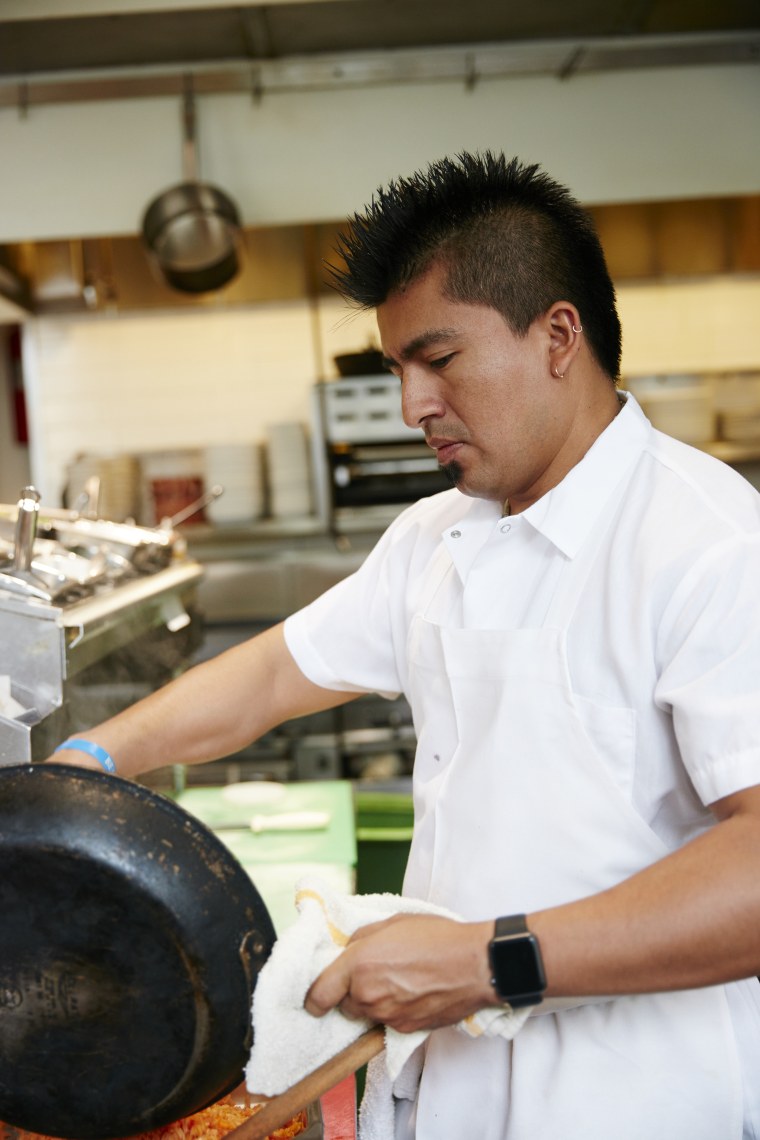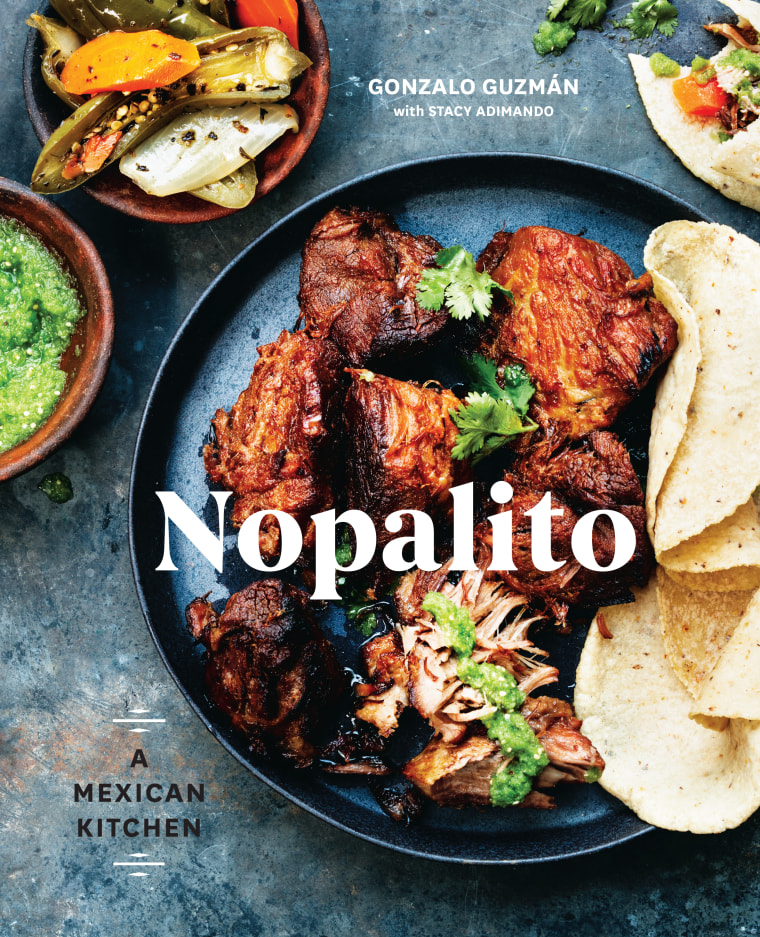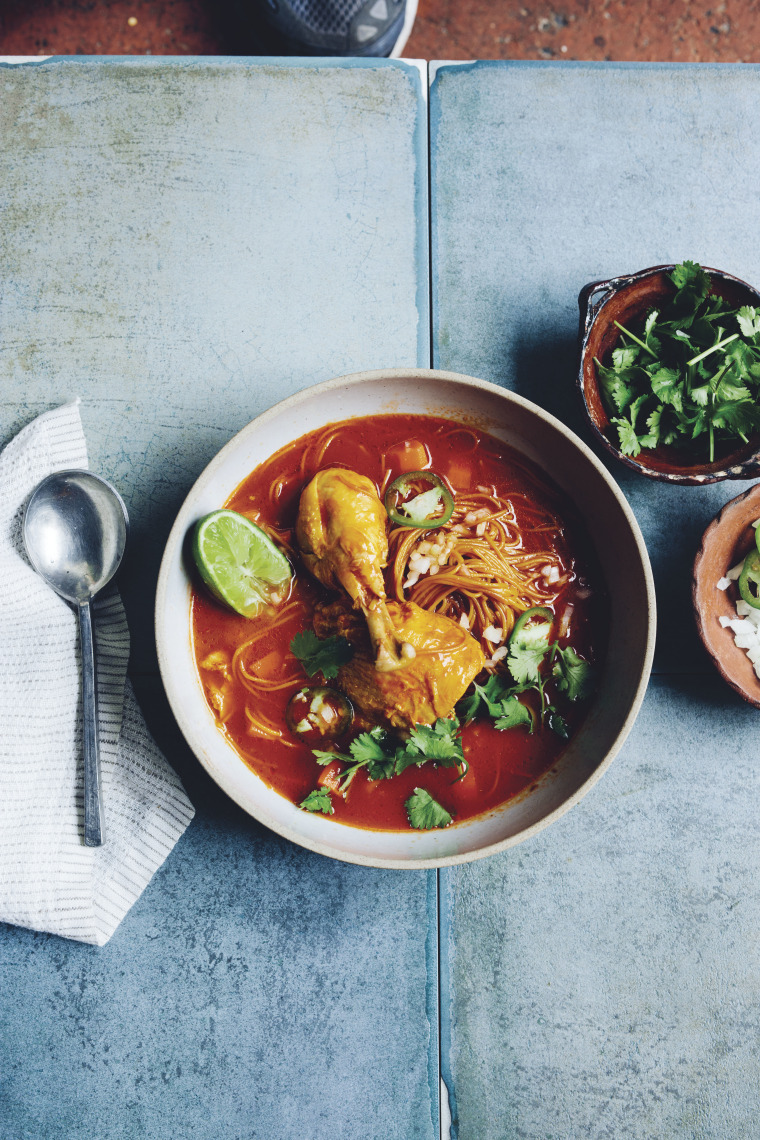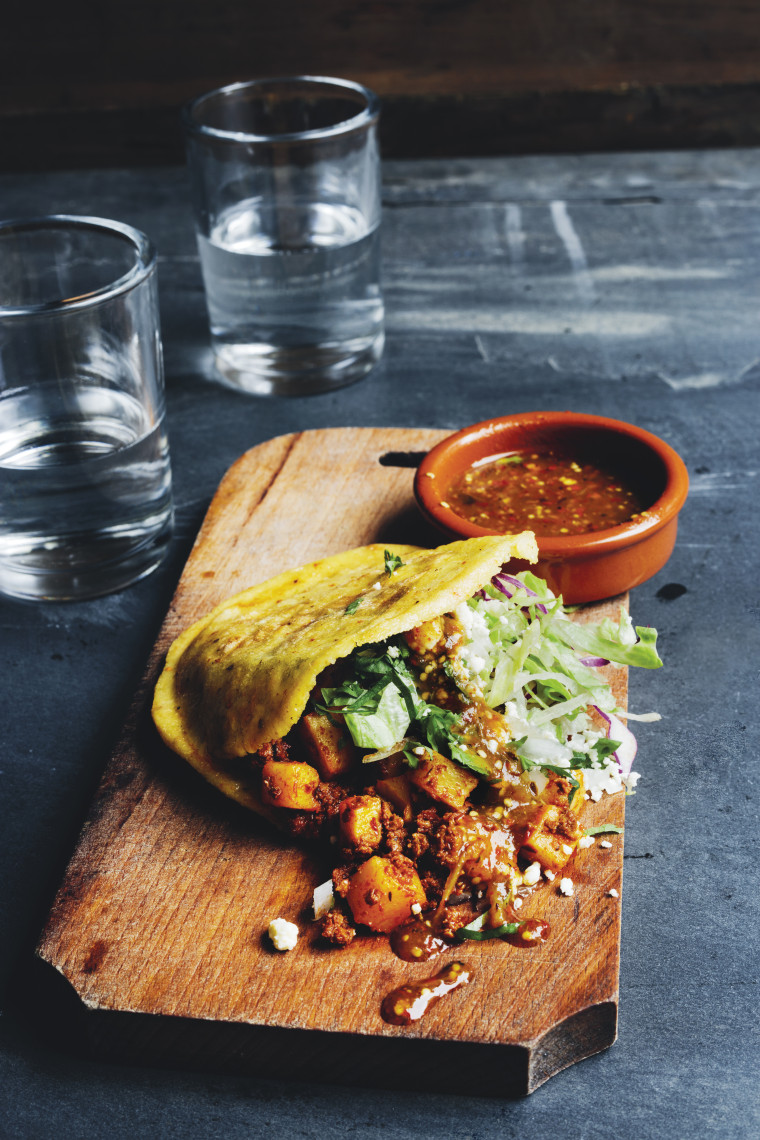Gonzalo González Guzmán, partner and chef in San Francisco’s popular Nopalito restaurants, knows what it’s like to inhabit two worlds at once.
Born in Veracruz and raised in Puebla, Mexico before coming to the United States when he was just 16 years old, he began washing dishes before working his way through restaurant stations and acquiring the skills he’d need to run his own professional kitchen.

But his early experience of cooking with his extended Mexican family never left him.
“When I see someone making a tortillas from scratch in the restaurant, I remember my mother making the tortillas for the day,” says Guzmán. “The same when we make a mole and I see the chiles toasting, I remember my family gathering to make mole.”
It’s an experience beautifully captured in Nopalito: A Mexican Kitchen, his new cookbook written with Stacey Adimando and photographed by Eva Kolenko.
With each recipe, Guzmán reminds us that the food at Nopalito may be a professional chef’s perspective in an ever-changing culinary scene, but it’s also a way of life whose traditions and techniques are worth preserving.

We spoke with Guzmán about where he finds inspiration, and how he makes sure his culinary past is ever present in his work.
In your introduction you describe “accidentally learning” Mexican food in Veracruz and Puebla. What was this early experience like?
My mom would cook a lot for the family and sometimes for school and special occasions. When I moved to Puebla where my whole family was based, they also had the tradition that every time there was a wedding or a baptism or special occasion they did their mole, along with other things like tamales, in big amounts.
It was fun to see people because it was a family thing. A group of women would take the feathers off the chickens and others would toast the chiles, so it was a good time to have all the family together. But I didn’t have the idea of cooking in my head, it was just a part of me growing up and being in the middle of these women cooking.
What was your first restaurant job?
Washing dishes, then I started moving up into different stations and restaurants and always working two jobs. I started working at this restaurant that closed, but right next door there was a another one called Kokkari. That’s where I met Chef Laurence [Jossel] who is the chef at Nopa and now my partner at Nopalito. I started taking cooking more seriously. I applied as a dishwasher, but he put me to peel some carrots and then I really didn’t go back to washing dishes.
Was there a moment where it went from being a job to something you really wanted to pursue?
Immigrants who come to San Francisco, all they want is a job, and restaurants are the number one answer to that. It was just a job [for me] but after a year and a half, seeing all these techniques, vegetables you can put together and come out with something new, all these braising and confit styles, it made me want to take it seriously and try my luck and see if I could be good at it.
Related: Mexican-American Chef Marcela Valladolid Invites Us Home in New Cookbook, ‘Casa Marcela’
I also knew that to be a chef, I needed to learn the language to communicate with a lot of people. I needed to go to school for cooking which I really couldn’t because I needed to work to send back money. My way of becoming a cook was by working in different restaurants. I decided that’s what I wanted to do.

What was your experience of Mexican food in the United States?
Everything was different, even simple tortillas. You couldn’t really find homemade tortillas here. I’m from the south so I’d never heard of flour tortillas, which when I came here, I saw a lot in burritos or quesadillas.
I couldn’t really find anything that reminded me of my city or where I was born. At first, I just wanted to learn techniques and I wasn’t sure what food I was going to do. Eventually, it made sense for me to make Mexican food because at that time nobody was really doing what we’re now doing at Nopalito.
Stacy Adimando talks about the “Gonzalo Effect” and the many ways you’ve inspired people around you. Who are some of your culinary heroes?
Chef Laurence [Jossel], not only because of the culinary things I’ve learned from him but because he’s pushed me to do things here that I didn’t think I was able to. He has kind of been a support with everything. He believed in me and always thought that I could represent Mexican food.

As far as non-professional [cooks], it’s all the women that get up in the morning and set a wood fire and cook their beans and make their tortillas and toast their chiles for the mole very carefully, and all the passion that they bring to it. It’s kind of like a ritual that they take very seriously, treasure, and value as much for economic reasons, because they’re not in the position to throw anything away.
Related: Award-Winning Chef Pati Jinich Touts Mexico’s Varied, Evolving Flavors
Every product, every ingredient, every part, they use to the maximum not to waste anything. It’s used completely. It’s when they gather the family to taste everything. It’s something I admire a lot. That’s something you lose in big cities - people buy tortillas by the kilo or tomatoes out of season. The idea behind the food we make in the restaurant is that it’s for a family that lives on a ranch where there are no stores and rely on what they can grow or what grows naturally in the mountains. It’s very different.
Is there a recipe in the book that feels more personal than others?
Probably sopa de fideos. The way my mom used to make it is she would fry the noodles until they were golden brown and then she would put them aside with a little salt and we would bite into them like chips. She would scream at me all the time. [Laughing] That’s one dish that I like a lot and the salty memories it brings me of my hometown and family.